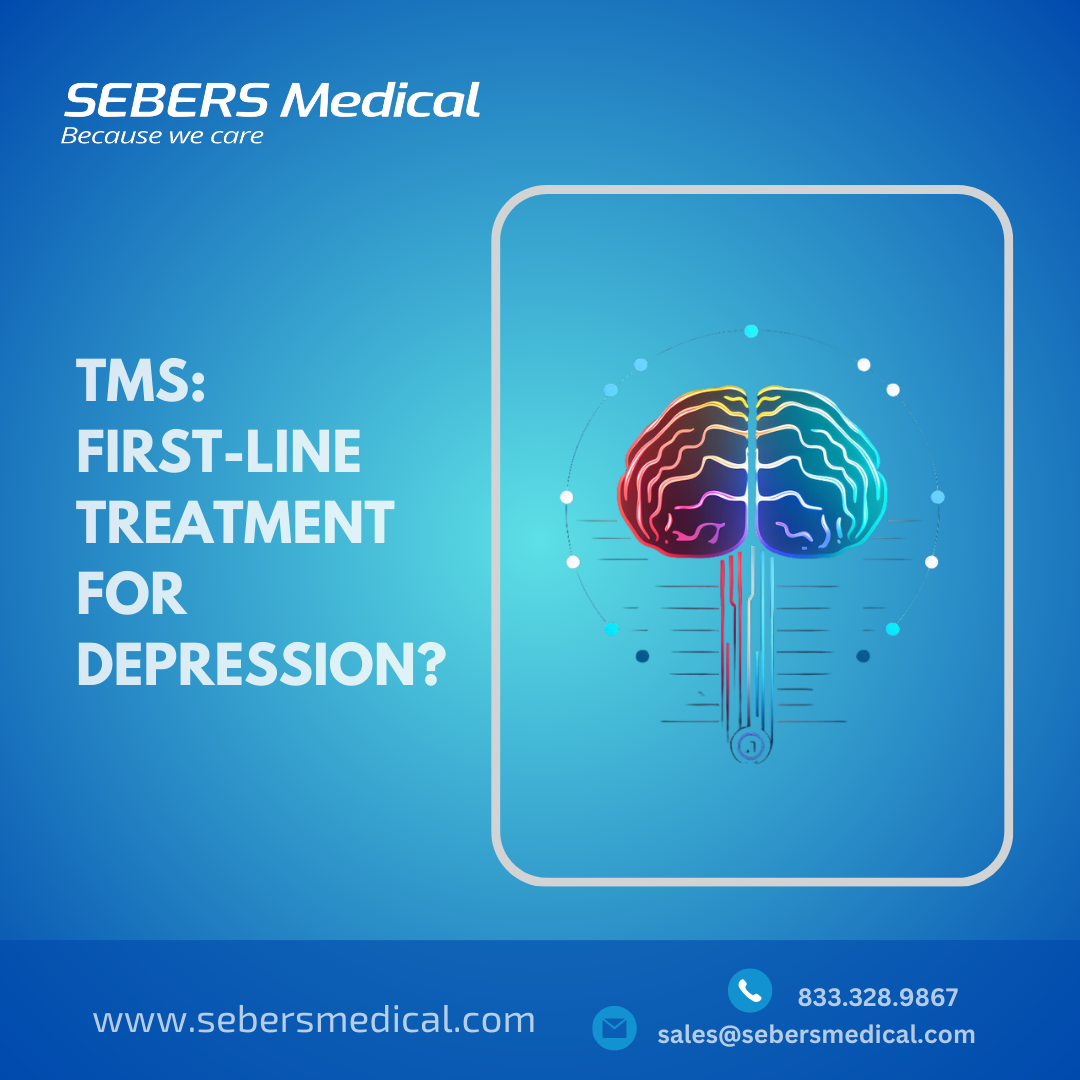The landscape of mental health treatment is rapidly evolving, and Transcranial Magnetic Stimulation (TMS) is at the forefront of this transformation. Traditionally used as a secondary or last-resort treatment for individuals who did not respond to antidepressant medications, TMS is now being considered a first-line treatment option for depression by many psychiatrists and clinics. The shift towards TMS is driven by its growing body of clinical evidence, superior safety profile, and potential for long-term relief.
The Case for TMS as a First-Line Treatment
For decades, antidepressant medications have been the primary treatment for major depressive disorder (MDD). However, not all patients respond positively to these medications, and many experience adverse side effects such as weight gain, fatigue, and sexual dysfunction. Moreover, medications often need to be taken over a long period, and in some cases, patients must try multiple drugs before finding one that works, if they find relief at all.
TMS offers an alternative. It is a non-invasive, drug-free treatment that uses magnetic pulses to stimulate areas of the brain involved in mood regulation. Multiple studies have demonstrated that TMS can achieve higher remission rates in patients with depression, with significantly fewer side effects compared to antidepressants. A large-scale clinical trial showed that TMS was more effective than additional antidepressants for treatment-resistant patients, and the success of TMS in this challenging population is contributing to its growing acceptance as a primary treatment option.
Long-Term Relief with Minimal Side Effects
A key reason behind the increased adoption of TMS is the long-term relief it offers. A typical TMS treatment protocol involves daily sessions over several weeks, and patients who respond positively often maintain their improvements for months or even years. Studies have shown that 68% of patients who benefit from TMS continue to experience positive outcomes for at least 12 months, reducing the need for ongoing treatments or medications.
Moreover, TMS has a low side-effect profile. The most common side effects include mild scalp discomfort or headaches, which generally subside after the first few sessions. This contrasts with the more severe and persistent side effects often associated with antidepressant medications, making TMS an appealing option for those who prioritize quality of life and minimizing treatment-related discomfort.
The Future of TMS
As TMS continues to gain recognition, its potential to revolutionize depression treatment is becoming clearer. Advancements in TMS technology, including the development of more precise stimulation techniques and individualized treatment protocols, are improving its efficacy and accessibility. Additionally, insurance companies are expanding coverage for TMS, which is further removing barriers for patients seeking this cutting-edge therapy.
With more clinics offering TMS and its success rate continuing to rise, it’s no surprise that psychiatrists are considering it as a first-line treatment for depression. The non-invasive nature, minimal side effects, and long-lasting relief make TMS a valuable tool in the fight against depression, offering hope for individuals who may have previously found their options limited.
TMS is reshaping the future of depression treatment. As a first-line treatment, it holds significant promise for individuals suffering from MDD who are seeking effective, non-drug alternatives to traditional therapies. With more research supporting its efficacy and accessibility on the rise, TMS is poised to become a mainstay in the treatment of depression.
Sources:
- George, M. S., et al. (2010). Daily left prefrontal transcranial magnetic stimulation therapy for major depressive disorder: a sham-controlled randomized trial. Archives of General Psychiatry, 67(5), 507-516.
- O’Reardon, J. P., et al. (2007). Efficacy and safety of transcranial magnetic stimulation in the acute treatment of major depression: a multisite randomized controlled trial. Biological Psychiatry, 62(11), 1208-1216.
- Carpenter, L. L., et al. (2012). Transcranial magnetic stimulation (TMS) for major depression: a multisite, naturalistic, observational study of acute treatment outcomes in clinical practice. Depression and Anxiety, 29(7), 587-596.
- Perera, T., et al. (2016). The Clinical TMS Society Consensus Review and Treatment Recommendations for TMS Therapy for Major Depressive Disorder. Brain Stimulation, 9(3), 336-346
